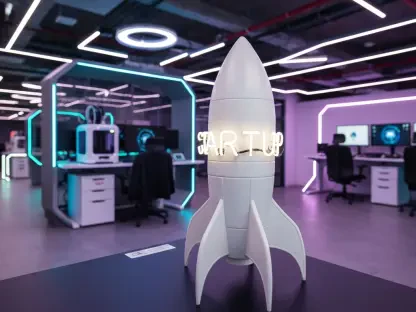What happens when an AI assistant steps into a team huddle or a family discussion, not just as a tool, but as a participant? OpenAI is exploring this intriguing possibility with a groundbreaking group chat feature for ChatGPT, now in pilot testing across select regions. This development promises to transform the way users interact with AI, shifting from isolated exchanges to dynamic, shared conversations. The potential to brainstorm, plan, or debate with AI alongside human collaborators sparks curiosity about how technology can redefine connection in everyday life.
The Significance of AI in Collaborative Spaces
This pilot program marks a pivotal moment in the evolution of AI tools. As digital platforms become the backbone of communication for work, education, and personal interactions, the need for collaborative features has surged. OpenAI’s initiative to integrate group chat functionality into ChatGPT addresses a growing demand for tools that blend artificial intelligence with multiplayer engagement. This isn’t merely about convenience; it’s a step toward embedding AI into the fabric of community-driven experiences, potentially altering how challenges are tackled and ideas are born.
The importance of this feature lies in its ability to bridge individual and collective needs. With studies showing that 68% of remote workers crave more interactive tools for team collaboration, as reported by a recent Gallup poll, the timing of this launch feels particularly relevant. By enabling ChatGPT to participate in group settings, OpenAI is positioning itself at the forefront of a trend where AI transcends its role as a solitary assistant, becoming a vital part of social ecosystems.
Inside the Group Chat Innovation
Delving into the specifics, the pilot program is active in Japan, New Zealand, South Korea, and Taiwan, offering a sneak peek into ChatGPT’s future. Accessible to Free, Plus, and Team users on both mobile and web platforms, the feature supports groups of 1 to 20 participants. Initiating a chat is straightforward—users tap a people icon and invite others directly or through a shared link, creating an inclusive yet controlled environment for interaction.
Privacy and user control form the backbone of this feature’s design. Group chats operate on an invitation-only basis, allowing members to leave at any time, while most can remove others, except for the creator who exits voluntarily. Personal chats and ChatGPT’s memory remain private, and for users under 18, content is filtered with added parental safeguards. These measures ensure that while the platform fosters collaboration, individual boundaries are respected.
Functionally, the group chat mirrors ChatGPT’s one-on-one interactions but adapts to multiple users with ease. Powered by GPT-5.1 Auto, it offers tools like search, image generation, file uploads, and dictation, with usage limits applying only to AI responses, not human-to-human messages. A standout aspect is ChatGPT’s social awareness—it knows when to contribute or stay silent, responds when tagged, and even uses emojis or personalized images to blend into group dynamics, mimicking natural conversation patterns.
Voices from the Pilot and OpenAI’s Broader Goals
Feedback from early users in the pilot regions suggests that ChatGPT’s behavior in group settings feels surprisingly intuitive. A project manager from Tokyo shared, “Having ChatGPT in our team discussions felt like adding a sharp, neutral voice—it summarized ideas and pulled up data instantly, keeping us on track.” Such insights highlight the practical value of AI in collaborative environments, reinforcing the potential for this feature to enhance productivity and creativity.
OpenAI views this pilot as a crucial learning phase, with user input expected to shape future rollouts and refinements. A company spokesperson emphasized, “The goal is to create an AI that doesn’t just assist but actively participates in group contexts, adapting to the subtle cues of human interaction.” This vision aligns with other recent endeavors, such as the launch of Sora 2, a standalone social media app focused on AI-generated video sharing, pointing to a strategic push toward integrating social elements across their offerings.
This direction reflects a broader ambition to redefine AI’s role in connectivity. By weaving collaborative features into ChatGPT and exploring community-driven platforms like Sora 2, OpenAI is crafting an ecosystem where technology amplifies shared experiences. The synergy between these initiatives suggests a future where AI tools are not just functional but inherently social, reshaping user engagement on a global scale.
Maximizing the Potential of Group Interactions
For those in pilot regions or anticipating the feature’s wider release, leveraging group chats effectively can unlock significant benefits. Start by defining the purpose of each group—whether for a professional project, academic study, or casual planning—to ensure focused discussions and relevant AI contributions. Clarity in objectives helps ChatGPT provide targeted input, elevating the quality of interactions.
Strategic use of built-in tools can further enhance the experience. Upload documents for quick reviews, utilize image generation for creative brainstorming, or employ search for instant fact-checking—ChatGPT can handle these tasks efficiently, freeing up human participants to focus on higher-level ideas. Tagging the AI directly for specific queries also prevents conversation clutter, ensuring responses are precise and timely.
Respecting privacy settings remains essential in maintaining a comfortable space. Familiarity with the invitation-only structure and exit options empowers users to control their involvement. By combining these practices, group chats can evolve into powerful hubs where human ingenuity and AI support intersect, creating seamless and productive exchanges.
Reflecting on a Social Shift in AI
Looking back, OpenAI’s rollout of the group chat feature for ChatGPT stood as a defining moment in blending AI with collaborative interaction. The pilot program laid the groundwork for a shift from solitary tool to social participant, with privacy measures and adaptive responses setting a high standard for user experience. Each step, from intuitive design to targeted functionalities, showcased a deliberate effort to balance individual needs with group dynamics.
Beyond the immediate impact, the integration of initiatives like Sora 2 hinted at a comprehensive strategy to prioritize connectivity within AI platforms. This trajectory suggested that future developments would likely focus on deepening community engagement, using feedback from early adopters to refine these tools. The challenge ahead was clear: continue innovating to ensure AI enhances, rather than disrupts, the nuances of human collaboration.
As this chapter closed, the next steps pointed toward broader access and enhanced features, driven by real-world insights. Stakeholders and users alike were encouraged to explore how such tools could transform their workflows or personal connections. The journey of AI into social spaces had only begun, promising a landscape where technology and togetherness could thrive in tandem.









